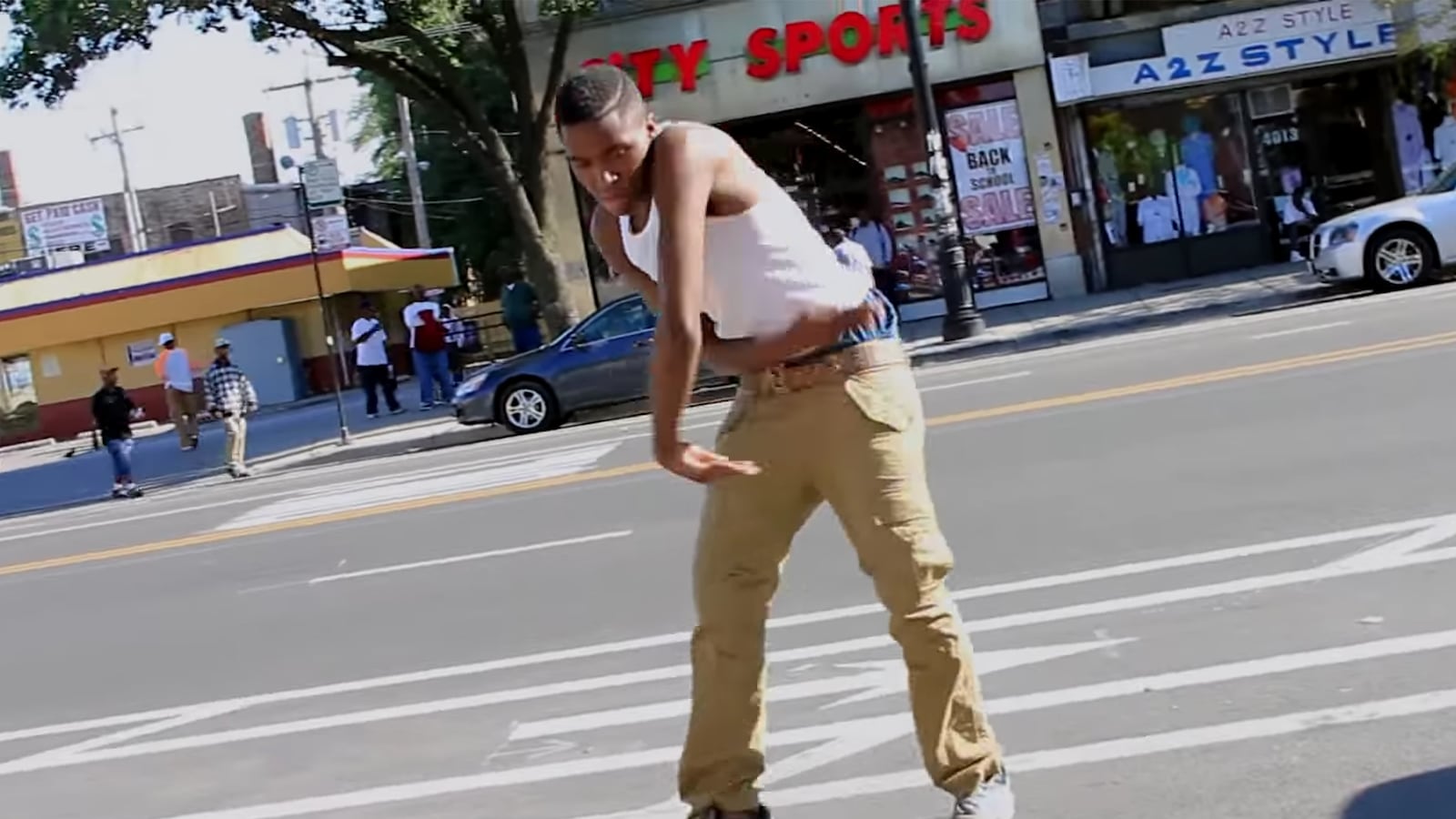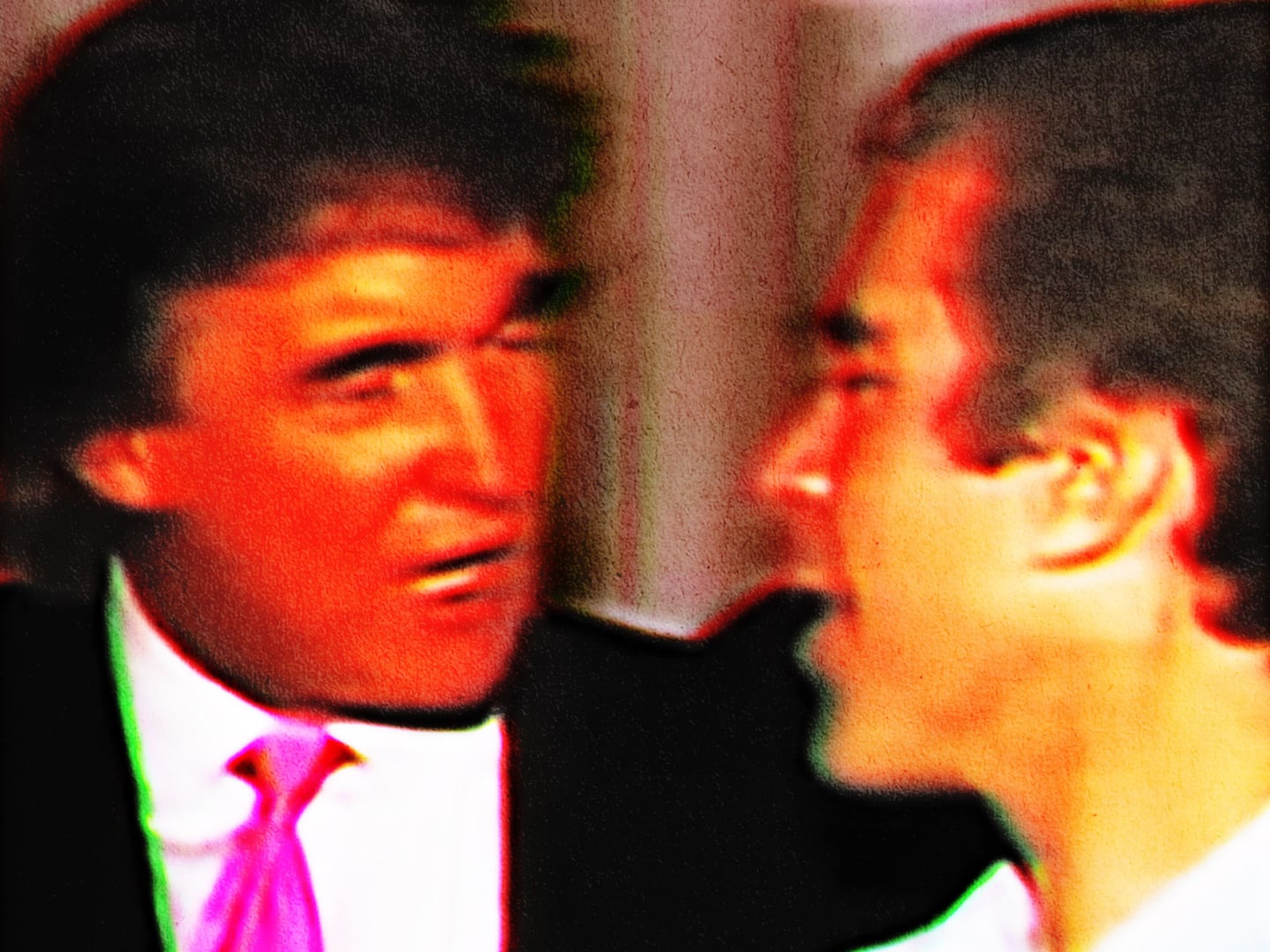Name a neighborhood in Chicago, and a native will tell you a famous rapper who grew up there. Oak Lawn? Kanye West. Calumet Heights? Common. Englewood? Chief Keef.
On Chicago’s West Side, kids claim DLOW and Lil Kemo as their hometown heroes.
Known as the kings of bop, Daryon Simmons (also known as DLOW) and Travon Biggs (also known as Lil Kemo) are widely considered the most popular dancers in the Chicago area.
So far they’ve been co-signed by Steve Harvey and Chance the Rapper, racked up millions of views on YouTube, and are gearing up for a national tour with Silento (the guy that made the Nae Nae).
DLOW and Kemo’s dance speciality is called “bopping,” which is both a style of music and a dance (and not the word’s previous incarnation, meaning more generally to dance).
Primarily created by local Chicago rappers, the music is upbeat, bouncy, repetitive, and full of auto-tuned vocals. Though bop dancers don’t exclusively dance to bopping music, it shouldn’t be confused with Chicago’s hardcore drill rap genre, nor Chicago’s storied ghetto house scene. Bopping is its own unique blend of DIY hip hop in a city with dozens of flavors of rap.
“You can never really understand what genre bop music is,” 20-year-old DLOW told me over the phone. “Bop music is energetic music. It’s gonna have you turnt up. It’s different. A lot of people listening to it for the first time won’t get it.”
It is genuinely hard to describe the bopping dance with words. Somewhat reminiscent of footworking, another type of Chicago street dance, bopping is a frenetic mix of alternately smooth and jerking body movements.
Though not particularly tied down to specific moves, the dance is roughly based around butterfly leg movements and freestyle arm motions. Simply put, it’s fast, it’s mesmerizing, and it’s turnt up.
Bopping is the latest in Chicago’s long history of dance crazes.
Chicago producer RP Boo pioneered footworking in the ’90s, which would eventually lead to Chicago duo Dude ’N Nem’s seminal “Watch My Feet,” as well as the Teklife juke music crew.
A lot of the slide dances you’ve heard at weddings and bar mitzvahs owe a lot to Chicago as well. Englewood native DJ Casper created the famous “Cha Cha Slide” (which hit #1 in the U.K. in 2000).
There are hundreds of videos on YouTube, Instagram, and elsewhere of kids doing the bopping dance. Kids make bop videos in their homes, in their schools, and in the streets.
DLOW and Kemo’s videos are consistently the most popular of the many out there.
The duo started making bopping videos together in the summer of 2013, filming dance routines in the streets of Chicago and posting them to YouTube.
Their videos had intricate choreography where both dancers played off each other’s moves and energy, taking the basic bop moves and injecting them with precision and personality. Search Lil Kemo and DLOW on YouTube and you’ll find dozens of clips of the two with hundreds of thousands to millions of views.
After gaining steady popularity online, the two began creating their own viral dance crazes. Kemo struck early with his original song and dance called the “Kemo Step” in 2013, which has over 4 million views YouTube views to date. DLOW dropped the “DLOW Shuffle” in 2014, which racked up over 8 million YouTube views.
In 2015, DLOW blew the roof off the scene, dropping the “Do It Like Me Challenge,” which hit over 51 million YouTube views and charted on the Billboard Hot 100, peaking at number 45.
I spoke to DLOW over the phone. He was about to finish rehearsals for a national dance tour called Let’s Dance: The Tour. Kemo plans to join the tour for a few dates.
DLOW is from Chicago’s Austin neighborhood, known as L Town, while Kemo hails from North Lawndale, known as K Town.
Both neighborhoods have some of the highest rates of violent crime in Chicago.
According to The Chicago Tribune, there were 48 homicides in Austin in 2015, along with 24 in North Lawndale that same year. This is in addition to 266 and 119 shooting victims in Austin and North Lawndale respectively in 2015.
“Growing up around all the violence and all the shooting, you have to be strong,” 21-year-old Kemo told me over the phone. “You have to really tell yourself that you have a heart. Me, being different, not wanting to be like everyone else, not wanting to shoot people and think it’s cool, it was never like that for me. I’m grown now, but when I was young I started dancing to get past all of that. Just for people to look at me as not a threat. I’m not trying to hurt you, harm you, I’m trying to live right.”
Though bop music sometimes has lyrics that dip into violent and sexist themes, both dancers speak seriously and passionately about not giving to pressures of their environment.
They’ve performed at a variety of anti-violence events across the Chicago area, including a “Stop The Violence” bash in Decatur in 2014, and a performance at Illinois Governors State University in 2015. In general, their music is a far cry from drill’s more nihilistic bent.
“I want people to understand that there’s no problem with being yourself,” Kemo told me. “It won’t get you anywhere you shouldn’t be. Some people try to adapt to their environment in the wrong way. My music doesn’t comment on killing anybody. What I’m promoting is positivity, having fun. I’m really not trying to act like I’m better than someone. It’s really because God sent me to do this. Period. I’ve been through shoot outs, [getting] jumped, all types of stuff when I was just trying to dance, but I’m still here today.”
The dance is popular with kids in the Chicago suburbs to the inner city.
Amari Brown, a 7-year-old shot and killed on July 4 in Humboldt Park, was a fan of DLOW and Kemo. His aunt said Amari loved bopping to the duo.
“When I read [about it], it brought tears to my eyes,” said DLOW. “That little boy was innocent. He wasn’t a gang banger. He didn’t even know about life. All he knew was dancing and having fun.”
“When I was growing up, I really didn’t watch the news as much because I was so focused on dancing,” Kemo told me. “But now that I’m at this age I’ve been watching the news and I constantly see people die. Die, die, die. It’s shocking. People die so much, sometimes it gets to the point where it I feel like it could be me any day now. These people are my friends, people who I know because I have fans and network with people. I hear about people getting hurt because I did an event for them. It’s just crazy.”
Despite the pain in their lives and in their city, both dancers are overwhelmingly positive in their personal outlook on life. They’re clearly the life of the party, but they constantly tell me that they dance to simply be themselves. Kemo speaks passionately about his faith in God, saying that God put him and DLOW together to dance and make music.
“My positivity comes just comes from the way I am,” DLOW told me. “DLOW stands for determined, loyal, optimistic, and willing to learn. That’s just me. Instead of me going down the path of being a savage, trying to kill someone, I wanted to be myself. I wanted to be the guy that wants everyone to have fun and turn up.”
“I’m motivated to keep putting out positive music,” said Kemo. “As far as African Americans, we’re all we got. We need to come together, we can stay strong together. You don’t always see a lot of people in different neighborhoods hanging together. I feel like I can make that happen.”






